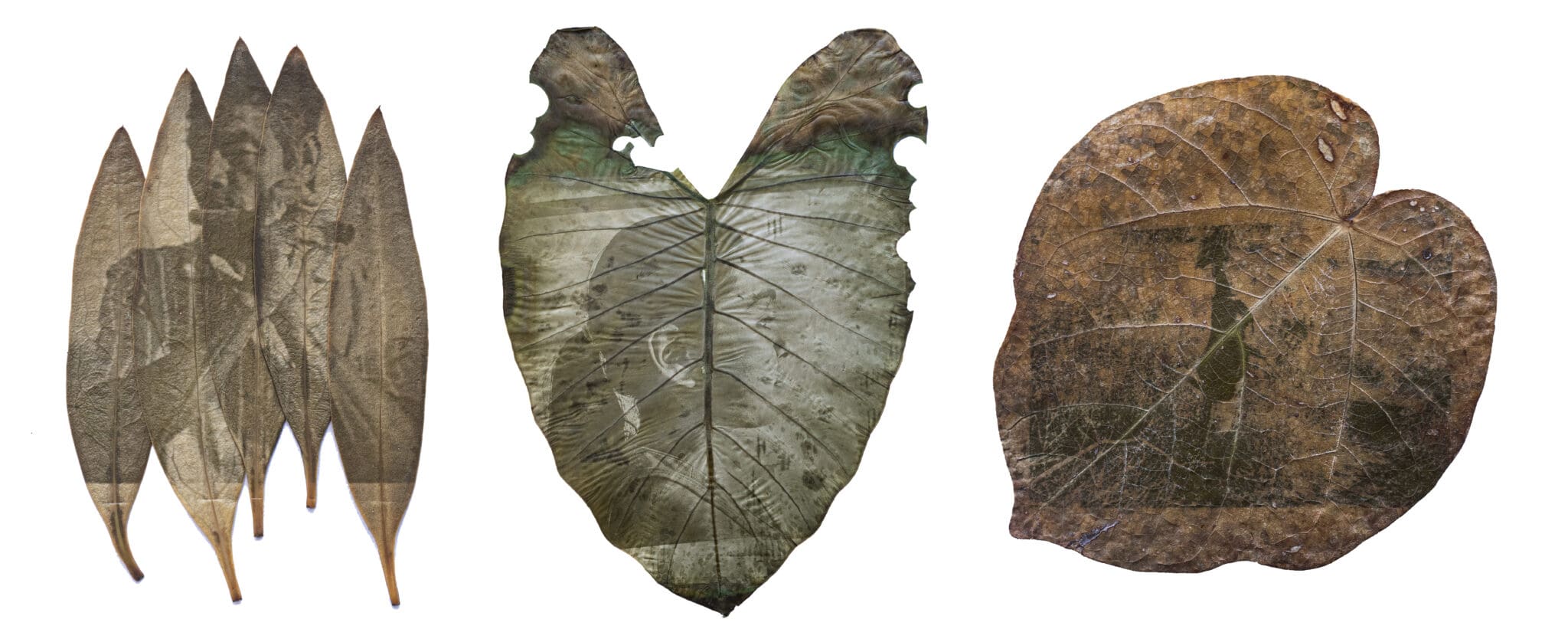
The second life of leaves
When Natalia Ortiz visited the village of El Pozo in northern Colombia, she was shocked to learn that there was no water there. Walking through the dry forest, she realized that life there depends on rain and that the villagers have known to collect its drops, store them and distribute them. In her project Huele a Lluvia (Smells like rain), winner of the Italo-Latin American Organization PHOTO IILA-XIII competition, the photographer uses the chlorophyll development technique to tell this story: portraits printed on local plants that show the faces, the landscapes and the nature they call home.
By Marcela Vallejo
Contrary to what one might think from its name, the village of El Pozo has no water. There are no streams, no rivers, and no wells. Located in La Mesa de Los Santos, department of Santander, in northern Colombia, the village is like a balcony overlooking the Chicamocha Canyon. When Colombian photographer Natalia Ortiz Mantilla saw the place, she was shocked. How could its inhabitants -about a hundred families- live on that dry land?
“The inhabitants depend on rainwater,” says Natalia, “there is an aqueduct, but it does not work well and does not supply the entire village, and it is not good quality water. So they depend on the sky. In the beginning, what moved her to become interested in the place was indignation; how was it possible for these people to live in such conditions? Over time she came to understand other things. She was surprised to learn that the inhabitants of El Pozo do not live with anguish the lack of water. On the contrary, they know when the rain will come and how to collect, store, and distribute it. Indignation turned into curiosity.
That interest led her to start Huele a Lluvia in 2019, a photographic project “that seeks to reflect on the ability of this community to adapt to environmental variations that climate change can generate in the tropical dry forest, the ecosystem where they live.” For Natalia, who has known the place for ten years and visits it frequently, it is also an observation of how people end up resembling the environment in which they live: a landscape at risk. But which, at the same time, “can provide the basis to better cope with climate change because it is an ecosystem that adapts to extreme seasons of drought and rain.”
But how to tell all this without using, once again, the documentary language of photography? Natalia Ortiz says that, in those days, a friend lent her a book on alternative development techniques, and that’s how she learned about the chlorophyll printing technique. “I’m going to explain how to make an image,” says the photographer before explaining the method. First, the photo is taken and printed on black and white acetate. The plant’s leaf on which the print is to be made is mounted on a flat surface. The acetate is on it, and the glass is on top of the two things. Everything must be fastened so that it does not move and is put in the sun. “Depending on the plant species, it can take two hours in direct sunlight with good exposure or five days to make the image.”
She found the technique perfect, among other things, because it doesn’t use water. But it also allowed her to establish a deeper relationship with the place, looking for the most appropriate plants to develop the photographs: tobacco, banana, and some types of anthuriums. Natalia is an environmental engineer by training, and this, plus the help of botanical friends, led her to make an inventory of the flora of the place, looking for the plants.
This process allowed her to continue talking about water, rain, and landscape. The inhabitants of El Pozo have developed an extensive knowledge of their surroundings. Depending on where the black clouds that herald storms form, they know whether or not water will fall on the trail. The moon’s phases indicate the most appropriate times to sow and harvest. The strength of the rains lets them know how good the harvest of Culonas ants, a gastronomic specialty of the region, will be. Natalia took portraits of many of the inhabitants, images of the landscapes, and some photographs of animals and insects.
Natalia Ortiz
This year, the photographer won the competition of the Italo Latin American Organization PHOTO IILA – XIII, dedicated to Latin American photographers under 35 years old, whose theme revolved around life, water, and health. The award included an exhibition in Rome and an artistic residency to develop a project in the city. The result will be exhibited next year.
“I think that, in general, in cities, people hate the moment when it rains,” says the photographer. When she lived in Bucaramanga, the closest city to the area where she developed the project, the first thought Natalia had when it rained was that she wouldn’t be able to go out. But in El Pozo, it is different: when it starts to rain, “they are grateful; depending on the season, the harvest will be good. It’s a different view, one directly linked to nature.”


